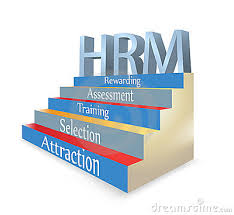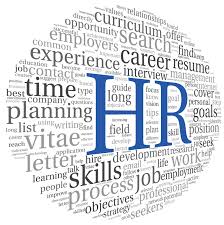Below is an extract of an article I
came across recently from a LinkedIn colleague, I am sharing it because i
think some if not all HR folks will benefit from the content. You can log on to www.kenexa.com for the full article
Human resources departments are accelerating their efforts to change. What’s driving this? A push by enterprises of all sizes to focus on issues and opportunities related to human assets. What major changes should HR make, and how? What new capabilities and competencies will HR professionals need to succeed? This article offers practical answers to these questions by advocating for a specific functional direction, a particular set of roles, and a range of competencies HR should master to meet ongoing challenges.
challenges.
All HR professionals know their departments are in a difficult position. On one hand, HR serves as an employee advocate, making sure concerns of individuals are voiced. On the other hand, HR needs to be a vital participant in formulating strategy and achieving goals necessary to push the entire organization forward. It is a difficult, but necessary, challenge to balance these two potentially conflicting positions.
An even more fundamental problem is that changing business demands have created major new priorities related to the way HR professionals work. Some years ago, we wrote, “The next few years represent a critical period for the human resource community as new roles and responsibilities in organizations are being renegotiated (Schoonover, 1998). That was true then, and is even truer now. Many competencies developed as part of our study remain important for the coming years, but the continuing evolution of business settings has created a need for updated and even completely new competencies.
Strong evidence shows many professionals have responded to new requirements with significantly new skills. However, most departments still are not keeping pace with the needed level of change. When we talk to our clients, we consistently hear the HR function needs to become better at being both a more active contributor to the business team and a more innovative protector and developer of employees. This dual mandate requires activities ranging from business strategy development to process re-engineering; from generating new staffing models to developing more sophisticated reward and recognition strategies; from capturing and distributing expert knowledge to applying technology and leveraging human assets. Most HR professionals recognize the needed changes, but they do not have clear standards or a clear path for instituting them.
THE HR FUNCTION OF THE FUTURE
 Fortunately, many HR professionals have begun making the necessary changes
required for success. However, HR departments still need to support these changes
energetically by:
Fortunately, many HR professionals have begun making the necessary changes
required for success. However, HR departments still need to support these changes
energetically by:
• Developing a compelling vision and value proposition for their entire organization
• Aligning the focus of their efforts on more strategic outcomes
• Renegotiating roles and relationships with operational leaders within organizations
• Committing to major, immediate competency development
These functional transformations often entail significant realignment of attitude toward a much more strategic, action-orientated stance and significant structure, process, activity and behavior changes.
In practice, different organizations design various structures and roles to meet their own needs. However, as HR departments begin their change process, professionals should focus initially on guiding principles rather than key activities or roles. These guidelines then can be applied as organizational design requirements T
Human resources departments are accelerating their efforts to change. What’s driving this? A push by enterprises of all sizes to focus on issues and opportunities related to human assets. What major changes should HR make, and how? What new capabilities and competencies will HR professionals need to succeed? This article offers practical answers to these questions by advocating for a specific functional direction, a particular set of roles, and a range of competencies HR should master to meet ongoing
All HR professionals know their departments are in a difficult position. On one hand, HR serves as an employee advocate, making sure concerns of individuals are voiced. On the other hand, HR needs to be a vital participant in formulating strategy and achieving goals necessary to push the entire organization forward. It is a difficult, but necessary, challenge to balance these two potentially conflicting positions.
An even more fundamental problem is that changing business demands have created major new priorities related to the way HR professionals work. Some years ago, we wrote, “The next few years represent a critical period for the human resource community as new roles and responsibilities in organizations are being renegotiated (Schoonover, 1998). That was true then, and is even truer now. Many competencies developed as part of our study remain important for the coming years, but the continuing evolution of business settings has created a need for updated and even completely new competencies.
Strong evidence shows many professionals have responded to new requirements with significantly new skills. However, most departments still are not keeping pace with the needed level of change. When we talk to our clients, we consistently hear the HR function needs to become better at being both a more active contributor to the business team and a more innovative protector and developer of employees. This dual mandate requires activities ranging from business strategy development to process re-engineering; from generating new staffing models to developing more sophisticated reward and recognition strategies; from capturing and distributing expert knowledge to applying technology and leveraging human assets. Most HR professionals recognize the needed changes, but they do not have clear standards or a clear path for instituting them.
THE HR FUNCTION OF THE FUTURE
• Developing a compelling vision and value proposition for their entire organization
• Aligning the focus of their efforts on more strategic outcomes
• Renegotiating roles and relationships with operational leaders within organizations
• Committing to major, immediate competency development
These functional transformations often entail significant realignment of attitude toward a much more strategic, action-orientated stance and significant structure, process, activity and behavior changes.
In practice, different organizations design various structures and roles to meet their own needs. However, as HR departments begin their change process, professionals should focus initially on guiding principles rather than key activities or roles. These guidelines then can be applied as organizational design requirements T
IBM Smarter Workforce helps build an
engaged, collaborative, productive workforce, to drive positive business
results.


